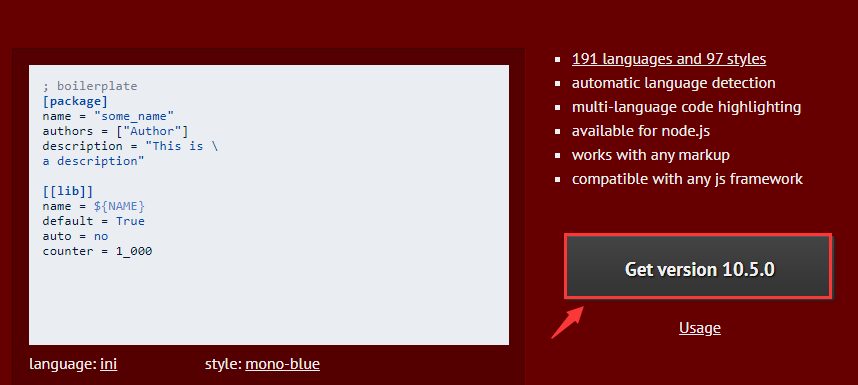目录
- 1 基于 STMP 协议的 node.js 发送邮件方法
- 2 基于 MS Exchange 邮件服务器的 node.js 发送邮件方法
- 2.1 使用 node-ews 发送 MS Exchange 邮件
- 2.1.1 封装一个基于 node-ews 发送邮件的方法
- 2.1.2 基于 NTLMAuth 的认证配置方式
- 2.2 使用 ews-javascript-api 发送 MS Exchange 邮件
- 3 扩展参考
本文主要介绍 node.js 发送基于 STMP 协议和 MS Exchange Web Service(EWS) 协议的邮件的方法。文中所有参考代码均以 TypeScript 编码示例。
1 基于 STMP 协议的 node.js 发送邮件方法
提到使用 node.js 发送邮件,基本都会提到大名鼎鼎的 Nodemailer 模块,它是当前使用 STMP 方式发送邮件的首选。
基于 NodeMailer 发送 STMP 协议邮件的文章网上已非常多,官方文档介绍也比较详细,在此仅列举示例代码以供对比参考:
封装一个 sendMail 邮件发送方法:
/**
* 使用 Nodemailer 发送 STMP 邮件
* @param {Object} opts 邮件发送配置
* @param {Object} smtpCfg smtp 服务器配置
*/
async function sendMail(opts, smtpCfg) {
const resultInfo = { code: 0, msg: '', result: null };
if (!smtpCfg) {
resultInfo.msg = '未配置邮件发送信息';
resultInfo.code = - 1009;
return resultInfo;
}
// 创建一个邮件对象
const mailOpts = Object.assign(
{
// 发件人
from: `Notify <${smtpCfg.auth.user}>`,
// 主题
subject: 'Notify',
// text: opts.content,
// html: opts.content,
// 附件内容
// /*attachments: [{
// filename: 'data1.json',
// path: path.resolve(__dirname, 'data1.json')
// }, {
// filename: 'pic01.jpg',
// path: path.resolve(__dirname, 'pic01.jpg')
// }, {
// filename: 'test.txt',
// path: path.resolve(__dirname, 'test.txt')
// }],*/
},
opts
);
if (!mailOpts.to) mailOpts.to = [];
if (!Array.isArray(mailOpts.to)) mailOpts.to = String(mailOpts.to).split(',');
mailOpts.to = mailOpts.to.map(m => String(m).trim()).filter(m => m.includes('@'));
if (!mailOpts.to.length) {
resultInfo.msg = '未配置邮件接收者';
resultInfo.code = - 1010;
return resultInfo;
}
const mailToList = mailOpts.to;
const transporter = nodemailer.createTransport(smtpCfg);
// to 列表分开发送
for (const to of mailToList) {
mailOpts.to = to.trim();
try {
const info = await transporter.sendMail(mailOpts);
console.log('mail sent to:', mailOpts.to, ' response:', info.response);
resultInfo.msg = info.response;
} catch (error) {
console.log(error);
resultInfo.code = -1001;
resultInfo.msg = error;
}
}
return resultInfo;
}
使用 sendMail 方法发送邮件:
const opts = {
subject: 'subject for test',
/** HTML 格式邮件正文内容 */
html: `email content for test: <a href="https://lzw.me" rel="external nofollow" rel="external nofollow" rel="external nofollow" rel="external nofollow" >https://lzw.me</a>`,
/** TEXT 文本格式邮件正文内容 */
text: '',
to: 'xxx@lzw.me',
// 附件列表
// attachments: [],
};
const smtpConfig = {
host: 'smtp.qq.com', //QQ: smtp.qq.com; 网易: smtp.163.com
port: 465, //端口号。QQ邮箱 465,网易邮箱 25
secure: true,
auth: {
user: 'xxx@qq.com', //邮箱账号
pass: '', //邮箱的授权码
},
};
sendMail(opts, smtpConfig).then(result => console.log(result));
2 基于 MS Exchange 邮件服务器的 node.js 发送邮件方法
对于使用微软的 Microsoft Exchange Server 搭建的邮件服务,Nodemailer 就无能为力了。Exchange Web Service(EWS)提供了访问 Exchange 资源的接口,在微软官方文档中对其有详细的接口定义文档。针对 Exchange 邮件服务的流行第三方库主要有 node-ews 和 ews-javascript-api。
2.1 使用 node-ews 发送 MS Exchange 邮件
下面以 node-ews 模块为例,介绍使用 Exchange 邮件服务发送邮件的方法。
2.1.1 封装一个基于 node-ews 发送邮件的方法
封装一个 sendMailByNodeEws 方法:
import EWS from 'node-ews';
export interface IEwsSendOptions {
auth: {
user: string;
pass?: string;
/** 密码加密后的秘钥(NTLMAuth.nt_password)。为字符串时,应为 hex 编码结果 */
nt_password?: string | Buffer;
/** 密码加密后的秘钥(NTLMAuth.lm_password)。为字符串时,应为 hex 编码结果 */
lm_password?: string | Buffer;
};
/** Exchange 地址 */
host?: string;
/** 邮件主题 */
subject?: string;
/** HTML 格式邮件正文内容 */
html?: string;
/** TEXT 文本格式邮件正文内容(优先级低于 html 参数) */
text?: string;
to?: string;
}
/**
* 使用 Exchange(EWS) 发送邮件
*/
export async function sendMailByNodeEws(options: IEwsSendOptions) {
const resultInfo = { code: 0, msg: '', result: null };
if (!options) {
resultInfo.code = -1001;
resultInfo.msg = 'Options can not be null';
} else if (!options.auth) {
resultInfo.code = -1002;
resultInfo.msg = 'Options.auth{user,pass} can not be null';
} else if (!options.auth.user || (!options.auth.pass && !options.auth.lm_password)) {
resultInfo.code = -1003;
resultInfo.msg = 'Options.auth.user or Options.auth.password can not be null';
}
if (resultInfo.code) return resultInfo;
const ewsConfig = {
username: options.auth.user,
password: options.auth.pass,
nt_password: options.auth.nt_password,
lm_password: options.auth.lm_password,
host: options.host,
// auth: 'basic',
};
if (ewsConfig.nt_password && typeof ewsConfig.nt_password === 'string') {
ewsConfig.nt_password = Buffer.from(ewsConfig.nt_password, 'hex');
}
if (ewsConfig.lm_password && typeof ewsConfig.lm_password === 'string') {
ewsConfig.lm_password = Buffer.from(ewsConfig.lm_password, 'hex');
}
Object.keys(ewsConfig).forEach(key => {
if (!ewsConfig[key]) delete ewsConfig[key];
});
// initialize node-ews
const ews = new EWS(ewsConfig);
// define ews api function
const ewsFunction = 'CreateItem';
// define ews api function args
const ewsArgs = {
attributes: {
MessageDisposition: 'SendAndSaveCopy',
},
SavedItemFolderId: {
DistinguishedFolderId: {
attributes: {
Id: 'sentitems',
},
},
},
Items: {
Message: {
ItemClass: 'IPM.Note',
Subject: options.subject,
Body: {
attributes: {
BodyType: options.html ? 'HTML' : 'Text',
},
$value: options.html || options.text,
},
ToRecipients: {
Mailbox: {
EmailAddress: options.to,
},
},
IsRead: 'false',
},
},
};
try {
const result = await ews.run(ewsFunction, ewsArgs);
// console.log('mail sent to:', options.to, ' response:', result);
resultInfo.result = result;
if (result.ResponseMessages.MessageText) resultInfo.msg = result.ResponseMessages.MessageText;
} catch (err) {
console.log(err.stack);
resultInfo.code = 1001;
resultInfo.msg = err.stack;
}
return resultInfo;
}
使用 sendMailByNodeEws 方法发送邮件:
sendMailByNodeEws({
auth: {
user: 'abc@xxx.com',
pass: '123456',
/** 密码加密后的秘钥(NTLMAuth.nt_password)。为字符串时,应为 hex 编码结果 */
nt_password: '',
/** 密码加密后的秘钥(NTLMAuth.lm_password)。为字符串时,应为 hex 编码结果 */
lm_password: '',
},
/** Exchange 地址 */
host: 'https://ews.xxx.com',
/** 邮件主题 */
subject: 'subject for test',
/** HTML 格式邮件正文内容 */
html: `email content for test: <a href="https://lzw.me" rel="external nofollow" rel="external nofollow" rel="external nofollow" rel="external nofollow" >https://lzw.me</a>`,
/** TEXT 文本格式邮件正文内容(优先级低于 html 参数) */
text: '',
to: 'xxx@lzw.me',
})
2.1.2 基于 NTLMAuth 的认证配置方式
直接配置 pass 密码可能会导致明文密码泄露,我们可以将 pass 字段留空,配置 nt_password 和 lm_password 字段,使用 NTLMAuth 认证模式。此二字段基于 pass 明文生成,其 nodejs 生成方式可借助 httpntlm 模块完成,具体参考如下:
import { ntlm as NTLMAuth } from 'httpntlm';
/** 将输入的邮箱账号密码转换为 NTLMAuth 秘钥(hex)格式并输出 */
const getHashedPwd = () => {
const passwordPlainText = process.argv.slice(2)[0];
if (!passwordPlainText) {
console.log('USEAGE: \n\tnode get-hashed-pwd.js [password]');
return;
}
const nt_password = NTLMAuth.create_NT_hashed_password(passwordPlainText.trim());
const lm_password = NTLMAuth.create_LM_hashed_password(passwordPlainText.trim());
// console.log('\n password:', passwordPlainText);
console.log(` nt_password:`, nt_password.toString('hex'));
console.log(` lm_password:`, lm_password.toString('hex'));
return {
nt_password,
lm_password,
};
};
getHashedPwd();
2.2 使用 ews-javascript-api 发送 MS Exchange 邮件
基于 ews-javascript-api 发送邮件的方式,在其官方 wiki 有相关示例,但本人在测试过程中未能成功,具体为无法取得服务器认证,也未能查证具体原因,故以下代码仅作参考:
/**
* 使用 `ews-javascript-api` 发送(MS Exchange)邮件
*/
export async function sendMailByEwsJApi(options: IEwsSendOptions) {
const resultInfo = { code: 0, msg: '', result: null };
if (!options) {
resultInfo.code = -1001;
resultInfo.msg = 'Options can not be null';
} else if (!options.auth) {
resultInfo.code = -1002;
resultInfo.msg = 'Options.auth{user,pass} can not be null';
} else if (!options.auth.user || (!options.auth.pass && !options.auth.lm_password)) {
resultInfo.code = -1003;
resultInfo.msg = 'Options.auth.user or Options.auth.password can not be null';
}
const ews = require('ews-javascript-api');
const exch = new ews.ExchangeService(ews.ExchangeVersion.Exchange2010);
exch.Credentials = new ews.WebCredentials(options.auth.user, options.auth.pass);
exch.Url = new ews.Uri(options.host);
ews.EwsLogging.DebugLogEnabled = true; // false to turnoff debugging.
const msgattach = new ews.EmailMessage(exch);
msgattach.Subject = options.subject;
msgattach.Body = new ews.MessageBody(ews.BodyType.HTML, escape(options.html || options.text));
if (!Array.isArray(options.to)) options.to = [options.to];
options.to.forEach(to => msgattach.ToRecipients.Add(to));
// msgattach.Importance = ews.Importance.High;
// 发送附件
// msgattach.Attachments.AddFileAttachment('filename to attach.txt', 'c29tZSB0ZXh0');
try {
const result = await msgattach.SendAndSaveCopy(); // .Send();
console.log('DONE!', result);
resultInfo.result = result;
} catch (err) {
console.log('ERROR:', err);
resultInfo.code = 1001;
resultInfo.msg = err;
}
return resultInfo;
}
3 扩展参考
nodemailer.com/about/
github.com/CumberlandG…
github.com/gautamsi/ew…
github.com/lzwme/node-…
以上就是node.js 基于 STMP 协议和 EWS 协议发送邮件的详细内容,更多关于node.js 发送邮件的资料请关注NICE源码其它相关文章!













